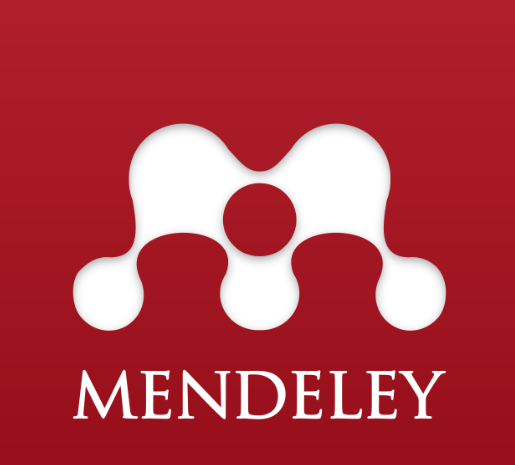Increasing the Competitive Advantage of MSMEs in the COVID-19 Pandemic Era by Implementing the Blue Ocean Strategy
A Case Study on RM Dikamali’
DOI:
https://doi.org/10.22219/mb.v11i2.18518Keywords:
Blue Ocean Strategy, Canvas Strategy, ERRC Grid, SWOT MatrixAbstract
The high risk of bankruptcy in micro-enterprises, that occurs during the COVID-19 pandemic, makes the micro-business segment experience the biggest impact of the decline in revenue due to limited supply and demand. History notes that during the 1998 economic crisis, MSMEs contributed 39.40% to GDP and were able to absorb 88.90% of workers. However, the situation in the COVID-19 pandemic is different from the situation in the 1998 economic crisis, in which technological developments are quite rapid in the current era. The rapid development of technology has led to increasingly strong pressure for companies to be able to achieve a competitive advantage. This study aims to identify and elaborate the application of the blue ocean strategy to MSMEs to increase competitive advantage. The innovation steps taken were evaluated with the Canvas Strategy and ERRC Grid. In addition, the researchers also applied the SWOT matrix as a starting point for mapping external and internal potentials. The results of this study indicated RM Dikamali’ has met three good criteria for implementing the blue ocean strategy, namely having focus, moving away from existing competitors, and having an attractive slogan. RM Dikamali’ took six stages in implementing the blue ocean strategy, making them be able to get out of market constraints and open new markets. The results of this study can be used as a reference for further studies concerning the Blue Ocean Strategy and for MSMEs in implementing the blue ocean strategy to increase their competitive advantage.
Downloads
References
Cravens, D. W. (2000). Strategic Marketing. McGraw-Hill.
David, F. R., & David, F. R. (2017). Strategic Management A Competitive Advantage Approach, Concepts and Cases (16th ed.). Pearson Education Limited.
Indriantoro, N., & Supomo, B. (2018). No Title. ANDI Publisher.
Kim, W. C., & Mauborgne, R. (n.d.). Blue Ocean Studio. https://www.blueoceanstrategy.com/tools/errc-grid/
Kim, W. C., & Mauborgne, R. (2015). Blue Ocean Strategy: Menciptakan Ruang Pasar Tanpa Pesaing dan Menjadikan Persaingan Tidak Lagi Relevan. Harvard Business School Publishing Corporation.
Local Food Marketing. (n.d.). https://enrd.ec.europa.eu/sites/default/files/assets/pdf/rural-entrepreneurship/localfoodguide.pdf
Rachman, A., Pujangkoro, S. A., & Ginting, R. (2013). Pendekatan Blue Ocean Strategy terhadap Strategi Pelayanan Rumah Sakit. Jurnal Teknik Industri USU, 1(2).
Raith, R. G., STaak, T., & H.M., W. (2012). A Decision-Analytic Approach to Blue-Ocean Strategy Development", Magdeburg: Otto-von-Guericke University. Jordan Journal of Business Administration, 8(2). https://www.researchgate.net/publication/309398524_Blue_Ocean_Strategy_as_a_Tool_for_Improving_a_Company’s_Marketing_Function_The_case_of_Jordan
Ratnasari, Kumadji, S., & Yulianto, E. (2016). Penerapan Blue Ocean Strategy (BOS) Dalam Upaya Meningkatkan Keunggulan Bersaing (Studi Pada Waroeng Steak And Shake Cabang Jl. Kawi Bawah 18 Malang). Jurnal Administrasi Bisnis, 30(1), 103–108.
Rudjito. (2016). BE AN OPTIMIST! Elex Media Komputindo.
Sampurno. (2010). Manajemen Stratejik: Menciptakan Keunggulan Bersaing Yang Berkelanjutan. Gadjah Mada University Press.
Sekaran, U., & Bougie, R. (2017). Metode Penelitian untuk Bisnis (Ed. 6). Salemba Empat.
Sugiyono. (2012). Metode Penelitian Bisnis. Alfabeta.
Suliyanto. (2018). Metode Penelitian Bisnis untuk Skripsi, Tesis dan Disertasi. Andi Offset.
Wardah, F. (2020). Sektor UMKM Paling Terdampak Covid-19. VOA Indonesia. https://www.voaindonesia.com/a/sektor-umkm-paling-terdampak-covid-19/5523330.html
Downloads
Published
Issue
Section
License
Copyright (c) 2022 Manajemen Bisnis

This work is licensed under a Creative Commons Attribution 4.0 International License.
Authors who publish with this journal agree to the following terms:
- Authors retain copyright and grant the journal right of first publication with the work simultaneously licensed under a Creative Commons Attribution-ShareAlike 4.0 International License that allows others to share the work with an acknowledgment of the work's authorship and initial publication in this journal.
- Authors are able to enter into separate, additional contractual arrangements for the non-exclusive distribution of the journal's published version of the work (e.g., post it to an institutional repository or publish it in a book), with an acknowledgment of its initial publication in this journal.
- Authors are permitted and encouraged to post their work online (e.g., in institutional repositories or on their website) prior to and during the submission process, as it can lead to productive exchanges, as well as earlier and greater citation of published work (See The Effect of Open Access).

This work is licensed under a Creative Commons Attribution-ShareAlike 4.0 International License.




71.png)





